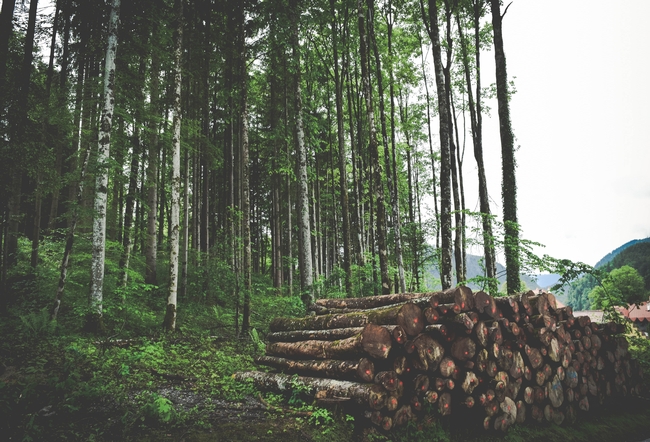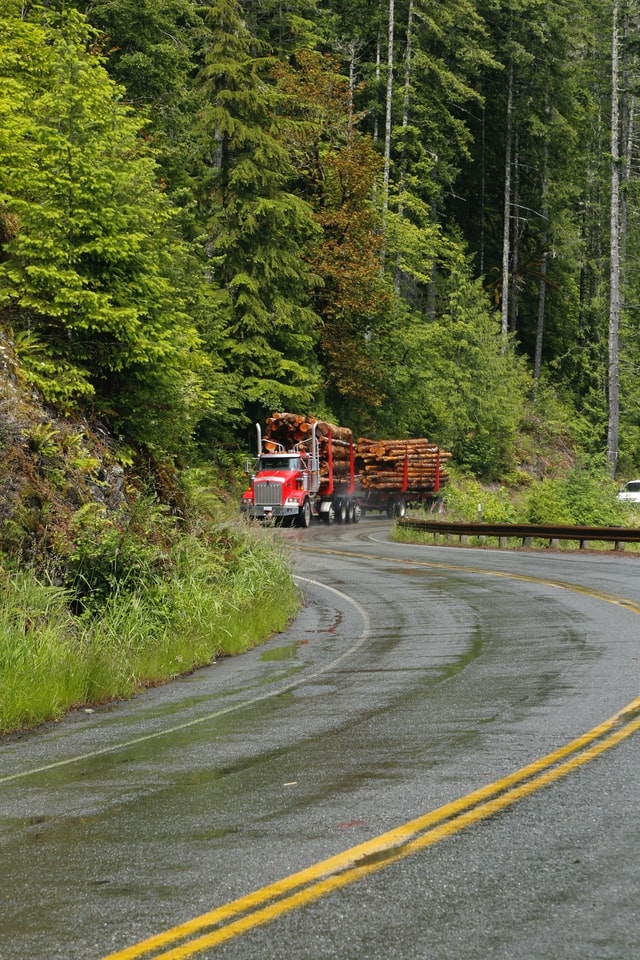For private forest landowners, the decisions of if or when to harvest trees can be confusing. Understanding costs and revenues is important, even if a landowner only wants to reinvest everything back into the land. Bill Stewart, Cooperative Extension Specialist in forestry at the University of California Berkeley, says landowners should consider harvesting trees as just one piece of their forest management plan. Landowners should ask themselves: Why do I own forest land? What goods or service might I want to sell? How willing am I to invest money now for future benefits? Most trees will grow, some will die, but which products will go up or down in value?
Q: Can forest landowners harvest trees to help address their management goals?
A: Yes. Remember that trees are always reproducing. In forests today, there are often too many trees per acre (300 – 500) which is too high for the water resources available. This results in smaller, less healthy trees. If you thin to ~60 trees per acre, then those remaining trees will grow bigger, faster, and be more resilient. Thinning out excess trees may also help fund other work you'd like done such as masticating brush or other practices for fire hazard reduction.
Q: Why is the price of timber so variable?
A: The price of wood is very volatile and varies depending on several factors such as:
- The species of trees you are harvesting – Historically in California, redwood has greater value than fir or pine. However, species prices can vary by region.
- Home construction - The more houses being built, the greater the demand for lumber which means higher prices for timber.
- The number of sawmills in your area – if you live in an area with numerous wood processing facilities, that will increase the competition and mills may bid higher for your timber. However, if a mill owns their own forested acres, they will often use their own timber and not buy from outside sources. The Asian export market out of the Port of Oakland can be very competitive for forest landowners near the port, though demand has been going down in recent years.
- Timber size - The competition to bid on, and the price for, smaller diameter trees for products such as paper or pulp is not as high as for larger diameter trees used in home construction. Trees measuring 20” diameter at breast height (dbh) or higher will often fetch a good price. For trees measuring between 10” and 12” dbh, they could still be valuable as saw logs, depending on the market. Trees measuring under 10” dbh, have a much smaller market, mostly as wood chips, and are often not as valuable.
You might also consider working with neighbors to increase the potential number of trees for harvest, which in turn, could help in increasing the overall bids for your projects. It is not necessary for neighbors to be on contiguous properties, but is helpful if they are on the same road systems and have the same species of trees.
Q: Can you sell diseased or dying trees? What about trees that have been blown down?
A: Yes, so long as the wood quality is still there. However, dead, dying and/or diseased trees, in many cases, have already decomposed and so do not have the monetary value that green trees do. Because blown down trees are dead, you have to determine if it is worth hauling them out or leaving them. Do you have enough to fill up a log truck? If so, it may pay for itself. If you only have a few down, then consider leaving them as the cost would be too high to remove them. If the blow down or burn has been widespread, there is often a glut of this material and mills will often prioritize processing logs off their own lands rather than buying additional logs, making the market weak.
Q: Who do we need to hire to fall the trees and haul them to a mill?
A: You typically have several forestry professionals working on your management projects. Start with a Registered Professional Forester (RPF) that you hire. The average rate for an RPF is ~$75 - $145/per hour and will vary by location. Some RPFs work for mills or forestry companies. You want an RPF that works only for you, and who will work to serve your legal, economic and aesthetic interests. The RPF will help plan the management activities based on your management goals and objectives. The RPF will then recommend a Licensed Timber Operator(LTO) to fall the trees. A truck driver/ log hauler will need to be hired to take the trees to the mill.
Q: Can I sell timber as woody biomass?
A: Possibly, though only if it doesn't have to be hauled long distances to a biomass facility. Since it is low value it is harder to make it ‘pay its way' out of the woods. Biomass electricity is currently a small player in California electricity markets. However, biomass could eventually replace much of the coal and natural gas we use from out of state sources. Currently, there are limited biomass facilities in California and there are no current plans to build additional, state-of-the–art industrial scale bioenergy plants.
Q: I have yet to see the results of logging look lovely. Can this be minimized?
A: Yes. Logged areas can look ugly for a few years. Soil disturbances often look better after a year or so depending on the amount of rain or snow the next winter and how fast vegetation grows. However, you will still have broken branches and stumps to look at. If you are harvesting within the view-shed of your home or business, you may want to consider spending more money on cleanup practices to improve the overall look of the logged area.
Q: What permitting is needed to harvest trees?
A: If a forest landowner decides to harvest and sell timber, either a Timber Harvest Plan, Non-industrial Timber Management Plan, or an exemption must be submitted and approved through Cal Fire. Forest landowners should work with their RPF to ensure they are in compliance of all harvest and environmental rules and regulations. Additionally, exemptions for removal of fire or insect damaged trees that lose value the longer they are left in the forest are much quicker and easier to complete than a full timber harvest plan and can be prepared by RPFs who would also manage the harvest.
For more information on timber harvest considerations, please see Forest Stewardship Series 21: Economic Considerations in Forest Stewardship, Publication 8251.